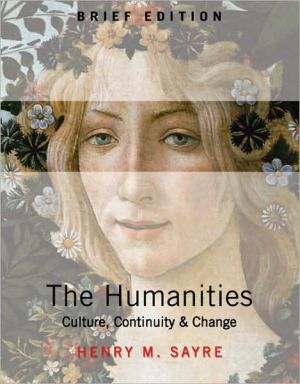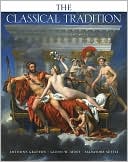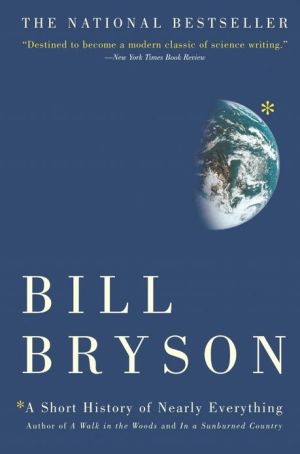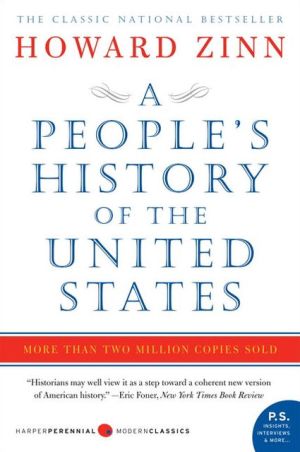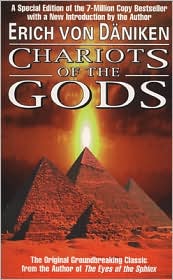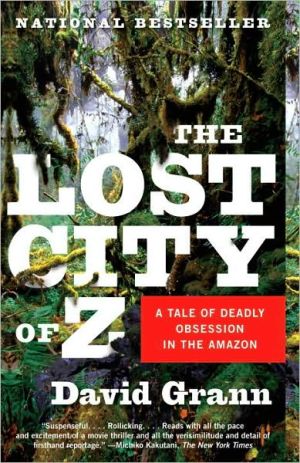Humanities, The, Brief Edition: Culture, Continuity, and Change
Discovering the Humanities helps students see context and make connections across the humanities by tying together the entire cultural experience through a narrative storytelling approach. Pearson Prentice Hall is proud to offer Discovering the Humanities–the new brief version of The Humanities: Culture, Continuity, and Change adapted by author Henry Sayre himself. Discovering the Humanities continues to help students see the big picture and make important connections through Henry Sayre’s...
Search in google:
Discovering the Humanities helps students see context and make connections across the humanities by tying together the entire cultural experience through a narrative storytelling approach. Pearson Prentice Hall is proud to offer Discovering the Humanities–the new brief version of The Humanities: Culture, Continuity, and Change adapted by author Henry Sayre himself. Discovering the Humanities continues to help students see the big picture and make important connections through Henry Sayre’s captivating narrative that has made the comprehensive text successful at schools across the nation.Henry Sayre took the introduction to the humanities course as a sophomore and was inspired to devote his life to the study of the humanities. He has always wanted to write a book that passes along the important and compelling stories of the humanities. Henry believes that students learn best by remembering stories, not by memorizing facts. What makes Discovering the Humanities special is that it tells the stories and captures the voices that have shaped and influenced human thinking and creativity.
ContentsPreface1 The Prehistoric Past and the River Cultures of the Ancient WorldThe Beginnings of CultureAgency and Ritual: Cave ArtPaleolithic Culture and Its ArtifactsThe Rise of AgricultureNeolithic PotteryThe Neolithic Megaliths of Northern EuropeNeolithic Cultures of the AmericasThe Anasazi and the Role of MythREADING 1.1 Zuni Emergence Tale, Talk Concerning the First BeginningMesopotamia: Power and Social Order in the Fertile CrescentSumerian UrAkkadBabylonREADING 1.2 from the Law Code of Hammurabi (ca. 1792—1750 BCE)Mesopotamian Literature and the Epic of GilgameshREADING 1.3 from the Epic of Gilgamesh, Tablet VI (ca. 1200 BCE)The HebrewsREADING 1.4 from the Hebrew Bible (Deuteronomy 6:6—9)The Stability of Ancient Egypt:Flood and SunThe Nile and Its CultureFOCUS Reading the Palette of NarmerThe Old KingdomThe New Kingdom and Its Moment of ChangeThe Early Civilizations of China and IndiaREADING 1.5 from the Book of SongsREADING 1.6 from the Dao de jingAncient IndiaREADING 1.7 from “The Second Teaching”in the Bhagavad Gita: Krishna’s Counsel in Time of WarCONTINUITY AND CHANGE Egyptian and Greek Sculpture2 The Greek WorldThe Classical TraditionBronze Age Culture in the AegeanThe CycladesMinoan Culture in CreteMycenean Culture on the PeloponneseThe Homeric EpicsREADING 2.1 from Homer, Iliad, Book 24 (ca. 750 BCE)The Rise of the Greek City-StatesThe Greek GodsThe Greek Architectural TraditionFOCUS The Classical OrdersGreek Sculpture and the Taste for NaturalismAthenian PotteryThe Poetry of SapphoREADING 2.2a Sappho, lyric poetryREADING 2.2b Sappho, lyric poetryREADING 2.3 from Book VII of Herodotus, The HistoriesThe Golden AgeREADING 2.4 Thucydides, History of the Peloponnesian Wars, Pericles’ Funeral SpeechThe Architectural Program at the AcropolisREADING 2.5 Plutarch, Life of PericlesThe Sculpture Program at the ParthenonPhilosophy and the PolisThe Theater of the PeopleThe Hellenistic WorldThe Empire of Alexander the GreatToward Hellenistic Art: Sculpture in the Late Classical PeriodAristotle: Observing the Natural WorldPergamon: Capital of Hellenistic GreeceAlexandriaCONTINUITY AND CHANGE Rome and Its Hellenisitic Heritage3 RomeUrban Life and Imperial MajestyOrigins of Roman CultureEtruscan RootsRepublican RomeRoman RuleCicero and the Politics of RhetoricREADING 3.1 Cicero, On DutyPortrait Busts, Pietas, and PoliticsImperial RomeFamily LifeLiterary Rome: Virgil, Horace, and OvidREADING 3.2 from Virgil, GeorgicsAugustus and the City of MarbleFOCUS The Forum Romanum and Imperial ForumsPompeiiREADING 3.3 from Letters of Pliny the YoungerCONTINUITY AND CHANGE The Roman Legacy4 The Flowering of ReligionFaith and the Power of Belief in the Early First MillenniumDevelopments in Judaic CultureThe Rise of ChristianityThe EvangelistsREADING 4.1 The Sermon on the Mount, from the Bible, Matthew 5:1-12Symbols and Iconography in Christian Thinking and ArtChristian RomeConstantine, the Church, and ChangeREADING 4.2 The Nicene CreedFOCUS The Sarcophagus of Junius BassusREADING 4.3 from Augustine, The City of GodThe Byzantine Empire and Its ChurchJustinian’s EmpireREADING 4.4 from Procopius, On Justinian’s Buildings (ca. 537)The Rise and Spread of IslamThe Qur’anREADING 4.5 from the Qur’an, Surah 76The HadithREADING 4.6 from the HadithThe Hijra and Muslim PracticeThe Spread of IslamBuddhism: “The Path of Truth”CONTINUITY AND CHANGE The Silk Road5 The Early Medieval WorldFiefdom, Monastery, and RomanesqueAnglo-Saxon Artistic Style and CultureBeowulf, the Oldest English Epic PoemREADING 5.1 Beowulf, trans. Seamus HeaneyThe Merging of Pagan and Christian StylesManuscript Illustration: Blending of Anglo-Saxon and Christian TraditionsCarolingian CultureThe Song of Roland: Feudal and Chivalric ValuesREADING 5.2 Song of RolandPromoting LiteracyThe Medieval MonasteryREADING 5.3 Hildegard of Bingen, Scite vias dominiCapetian France and the Norman ConquestPilgrimage Churches and the RomanesqueFOCUS The Bayeux TapestryREADING 5.4 from Pope Innocent III, On the Misery of the Human ConditionCluny and the Monastic TraditionThe Crusades and the Culture of RomanceREADING 5.5 Comtessa de Dia’s “Cruel Are the Pain I’ve Suffered,”from Lark in the Morning: The Verses of the TroubadoursREADING 5.6 from Chrétien de Troyes, LancelotCONTINUITY AND CHANGE Toward a New Urban Style: The Gothic6 The Gothic and the Rebirth of NaturalismCivic and Religious Life in an Age of InquiryThe Gothic CathedralStained GlassGothic ArchitectureGothic SculptureMusic in the Gothic Cathedral: Growing ComplexityThe Rise of the UniversityAbelard and the Dialectical MethodThomas Aquinas and ScholasticismREADING 6.1 Thomas Aquinas, from Summa TheologicaThe Radiant Style and the Court of Louis IXCivic and Religious Life in Siena and FlorenceSiena: A Free CommuneFlorence: Archrival of SienaTuscan Religious LifePainting: A Growing NaturalismDuccio and Simone MartiniCimabue and GiottoThe Spread of Vernacular Literature in EuropeDante’s Divine ComedyFOCUS Giotto’s Arena ChapelREADING 6.2 from Dante, Inferno, Canto 34The Black Death and Its AftermathREADING 6.3 from Boccaccio, DecameronPetrarch’s SonnetsREADING 6.4 Petrarch, Sonnet 134Chaucer’s Canterbury TalesREADING 6.5 from Chaucer, The Canterbury Tales, PrologueChristine de Pizan: An Early FeminstREADING 6.6 from Christine de Pizan, Book of the City of LadiesCONTINUITY AND CHANGE The New Humanism7 The RenaissanceFlorence, Rome, and VeniceThe State as a Work of Art: Florence and the MediciThe Gates of ParadiseFlorence CathedralScientific Perspective and Naturalistic RepresentationBrunelleschi, Alberti, and the Invention of Scientific PerspectiveThe Classical Tradition in Freestanding Sculpture: DonatelloThe Medici Family and HumanismLorenzo the Magnificent: “... I find a relaxation in learning.”READING 7.1 Song of Bacchus, or “Triumph of Bacchus and Ariadne”from Lorenzo de’ Medici: Selected Poems and ProseREADING 7.2 from Pico della Mirandola, Oration on the Dignity of Man (1486)Beyond Florence: The Ducal Courts and the ArtsThe Montefeltro Court in Urbino and CastiglioneREADING 7.3a from Baldassare Castiglione, The Courtier, Book 1 (1513—18; published 1528)READING 7.3b from Baldassare Castiglione, The Courtier, Book 3READING 7.4 from Laura Cereta, Defense of Liberal Instruction for Women (1488)The Sforza Court in Milan and Leonardo da VinciFrom Florence to Rome: The High RenaissanceBramante and the New Saint Peter’s BasilicaMichelangelo and the Sistine ChapelThe Stanza della SegnaturaThe Medici PopesFOCUS Raphael’s School of AthensJosquin des Prez and the Sistine Chapel ChoirNiccolò Machiavelli and the Perfect PrinceREADING 7.5a from Niccolò Machiavelli, The Prince, Chapter 14 (1513)READING 7.5 b from Niccolò Machiavelli, The Prince, Chapter 5 (1513)The High Renaissance in VeniceVenetian ArchitectureMasters of the Venetian High Renaissance: Giorgione and TitianThe Literary Courtesan in VeniceREADING 7.6 from Veronica Franco, Terze Rime, Capitolo 13Music in the Venetian High RenaissanceCONTINUITY AND CHANGE Palladio and His Influence8 Renaissance and Reformation in the NorthBetween Wealth and WantArt, Commerce, and Merchant PatronageSelling Art: Bruges and AntwerpMerchant Patrons and Oil Painting in FlandersJan van Eyck in BrugesHieronymus Bosch in ’s-HertogenboschFOCUS Bosch’s Garden of Earthly DelightsThe German TraditionEmotion and Christian Miracle: The Art of Matthias GrünewaldNorthern Detail Meets Southern Humanism: The Art of Albrecht DürerHumanism and Reformation in the NorthThe Satire of Desiderius ErasmusREADING 8.1 from Desiderius Erasmus, Julius Excluded from Heaven (1513)READING 8.2a from Desiderius Erasmus, In Praise of Folly (1509)READING 8.2b from Desiderius Erasmus, In Praise of Folly (1509)Martin Luther’s ReformationREADING 8.3 from Martin Luther, Preface to Works (1545)The Spread of the ReformationThe Printing Press: A Force for Ideas and ArtMusic in PrintWriting for Print and Play: The New HumanistsREADING 8.4 from Thomas More, Utopia, Book II (1516)READING 8.5 from William Shakespeare, Hamlet, Act II, scene II (1623)The English Portrait TraditionCONTINUITY AND CHANGE The Church Strikes Back9 The Age of EncounterWest Africa, the Americas, China, and JapanThe Spanish EmpireREADING 9.1 from Christopher Columbus, Diaries (1492)The Pre-Columbian EraCortés in MexicoREADING 9.2 from Bernal Diaz, True Historyof the Conquest of New Spain (ca. 1568; published 1632)Pizarro in PeruWest African Culture and the PortugueseKingdom of the KongoChina and Its InfluenceThe Song Dynasty(960—1279 ce)The Yuan Dynasty (1279—1368)The Ming Dynasty (1368—1644)FOCUS Guo Xi’s Early SpringThe Flowering of JapanShinto: Reverence for the Natural WorldBuddhism Arrives in JapanThe Heian Period: Courtly RefinementREADING 9.3 from Murasaki Shikibu, DiariesREADING 9.4 from Ki no Tomonori, “This Perfectly Still”The Kamakura Period (ca. 1185—1392): Samurai and ShogunateThe Muromachi Period (1392—1573): Cultural PatronageThe Momoyama Period (1573—1615): Foreign InfluencesThe Closing of JapanCONTINUITY AND CHANGE The Influence of Zen Buddhism10 The Counter-Reformation and the BaroqueEmotion, Inquiry, and Absolute PowerMannerism and the Early Counter-ReformationThe Council of Trent and Catholic Reform of the ArtsThe Rise of MannerismREADING 10.1 from Pietro Aretino, Letter to Michelangelo (1545)READING 10.2 from The Trial of Veronese (1573)Cervantes and the Picaresque TraditionThe Baroque in ItalyREADING 10.3 from Ignatius Loyola, Spiritual Exercises, Fifth Exercise (1548)Baroque Sculpture: BerniniREADING 10.4 from Teresa of Ávila, “Visions,”Chapter 29 of The Life of Teresa of Ávila (before 1567)The Drama of Painting: Caravaggio and the CaravaggistiREADING 10.5 John Donne, “Batter My Heart” (1618)Venice and Baroque MusicThe Secular Baroque in the NorthNew Imagery: Still Life, Landscape, and Genre PaintingFOCUS Rembrandt’s The Anatomy Lesson of Dr. TulpBaroque Music in the NorthAbsolutism and the Baroque CourtThe Arts of the French CourtREADING 10.6 from Molière, Tartuffe, Act V (1664)The Court Arts of England and SpainCONTINUITY AND CHANGE Excess and Restraint11 Enlightenment and RococoThe Claims of Reason and the Excesses of PrivilegeThe English EnlightenmentREADING 11.1 from John Dryden, “Annus Mirabilis,” 1667The New Rationalism and the Scientific RevolutionREADING 11.2 from René Descartes, Meditations (1641)Absolutism Versus Liberalism: Thomas Hobbes and John LockeREADNG 11.3 from Locke’s Essay on Human Understanding (1690)John Milton’s Paradise LostREADING 11.4a from John Milton, Paradise Lost, Book 5 (1667)READING 11.4b from John Milton, Paradise Lost, Book 5 (1667)Satire: Enlightenment WitREADING 11.5 from Jonathan Swift, Gulliver’s Travels, Book IV, Chapter VI (1726)READING 11.6 from Alexander Pope, An Essay on Man (1732)Literacy and the New Print CultureThe Enlightenment in FranceThe RococoThe English GardenArt Criticism and TheoryThe PhilosophesREADING 11.8 from “Law of Nature or Natural Law,”from the Encyclopédie (1751—1772)READING 11.9 from Jean-Jacques Rousseau, The Social Contract,Book 1, Chapter 4 (“Slavery”) (1762)READING 11.10 from Jean-Jacques Rousseau,Discourse on the Origin of Inequality among Men (1755)Cross-Cultural ContactThe South PacificThe Arts of the Qing Dynasty (1644—1911)FOCUS Europe’s Chinoiserie CrazeIslamic India: The Taste for Western ArtCONTINUITY AND CHANGE Rococo to Revolution12 The Age of RevolutionFrom Neoclassicism to RomanticismThe American and French RevolutionsThe Declaration of IndepenenceREADING 12.1 from The Declaration of Independence (1776)The Declaration of the Rights of Man and CitizenREADING 12.2 from The Declaration of the Rights of Man and Citizen (1789)The Neoclassical SpiritJacques-Louis David and the Neoclassical StyleNapoleon’s Neoclassical TastesFOCUS David’s The Lictors Returning to Brutus the Bodies of His SonsNeoclassicism in AmericaThe Issue of SlaveryREADING 12.3 from Olaudah Equiano, The Interesting Narrativeof the Life of Olaudah Equiano, or Gustavus Vassa the African (1789)The Romantic ImaginationREADING 12.4 from William Wordsworth, “Tintern Abbey” (1798)READING 12.5 from William Wordsworth, “Preface” to Lyrical Ballads (1800)READING 12.6 John Keats, “Ode on a Grecian Urn” (1819)The Romantic LandscapeThe Romantic HeroREADING 12.7 from George Gordon, Lord Byron, “Prometheus” (1816)READING 12.8 from Johann Wolfgang von Goethe, Faust, Part I (1808)From Classical to Romantic MusicThe Classical TraditionBeethoven: From Classicism to RomanticismREADING 12.9 from Ludwig van Beethoven, Heiligenstadt Testament (1802)Romantic Music after BeethovenCONTINUITY AND CHANGE From Romanticism to Realism13 The Working Class and the BourgeoisieThe Conditions of Modern LifeThe New RealismMarxismLiterary RealismREADING 13.1 from Dickens, Sketches by Box (1836)READING 13.2 from Flaubert, Madame Bovary (1856)READING 13.3 from Narrative of the Life of Frederick Douglass (1845)READING 13.4 from Harriet Beecher Stowe, Uncle Tom’s Cabin (1852)READING 13.5 from Mark Twain, Huckleberry Finn (1885)Realist Art: The Worker as SubjectPhotography: Realism’s Pencil of LightIn Pursuit of Modernity: Paris in the 1850s and ‘60sCharles Baudelaire and the Poetry of Modern LifeREADING 13.6 Charles Baudelaire, “Carrion,” in Les Fleurs du mal (1857)(translation by Richard Howard)Émile Zola and the Naturalist NovelREADING 13.7 from Émile Zola, “The Moment in Art” (1867)READING 13.8 from Émile Zola, Preface to Thérèse Raquin, 2nd edition (1868)Édouard Manet: The Painter of Modern LifeREADING 13.9 from Charles Baudelaire, “The Painter of Modern Life” (1863)Nationalism and the Politics of OperaImpressionist ParisMonet’s Plein-Air VisionMariosot and Pissaro: The Effects of PaintRenoir, Degas, and the Parisian CrowdThe Gilded Age in AmericaThe Song of the Romantic Self-Emerson, Thoreau, and WhitmanREADING 13.10 from Ralph Waldo Emerson, Nature, Chapter 1 (1836)READING 13.11 from Henry David Thoreau, Walden, or Life in the Woods, Chapter 2 (1854)READING 13.12 from Walt Whitman, “Crossing Brooklyn Ferry” (1856)READING 13.13 from Walt Whitman, “Song of Myself,” in Leaves of Grass (1867)The American WomanFOCUS Eakins’s Gross Clinic and Agnew ClinicThe American AbroadCONTINUTIY AND CHANGE A Fair to Remember14 The Modernist WorldThe Arts in an Age of Global ConfrontationThe Challenge to Cultural IdentityThe Fate of the Native AmericansThe British in China and IndiaThe Opening of JapanAfrica and EmpireDarwinian Evolution and the Theoretical Justification for ImperialismThe Rise of ModernismPost-Impressionism PaintingPablo Picasso’s Paris: At the Heart of the ModernREADING 14.1 from Gertrude Stein, The Autobiography of Alice B. Toklas (1932)Futurism: The Cult of SpeedThe French Fauves and the Expressionist Movement in GermanyModernist Music and DanceThe Great War and Its ImpactTrench Warfare and the Literary ImaginationREADING 14.2 Wilfred Owen, “Dulce et Decorum Est” (1918)READING 14.3 William Butler Yeats, “The Second Coming” (1919)READING 14.4 from T. S. Eliot, The Waste Land (1921)Escape from Despair: DadaRussia: Art and RevolutionFreud and the Workings of the MindREADING 14.5 from Sigmund Freud, Civilization and Its Discontents (1930)FOCUS Eisenstein’s The Battleship Potemkin, “Odessa Steps Sequence”The Dreamwork of Surrealist PaintingThe Stream-of-Consciousness NovelCONTINUITY AND CHANGE The Bauhaus: From Weimar to America15 Decades of ChangeThe Plural Self in a Global WorldWorld War II and Its AftermathJapan after the War: Living with the BombEurope after the War: The Existential questREADING 15.1 from Jean-Paul Sartre, No Exit (1944)READING 15.2a from Samual Beckett, Waiting for Godot, Act I (1954)READING 15.2b from Samuel Beckett, Waiting for Godot, Act II (1954)America after the War: Triumph and DoubtREADING 15.3 from Allan Kaprow, “The Legacy of Jackson Pollock” (1958)Mass Media and the Culture of ConsumptionHigh and Low: The Example of MusicPop ArtFOCUS Rosenquist’s F-111The Ongoing Fight for Civil RightsThe Harlem Renaissance and the Roots of the MovementREADING 15.4 Alan Locke, The New Negro (1925)READING 15.5 from Langston Hughes, “Jazz Band in a Parisian Cabaret” (1925)The Blues and JazzREADING 15.6 from Langston Hughes, “Weary Blues” (1925)The Winds of ChangeThe Feminist MovementThe Theoretical Framework: Betty Friedan and NOWREADING 15.7 Anne Sexton “her Kind” (1960)Feminist ArtThe Postmodern EraPostmodern Architecture: The Example of Frank GehryEast/West, North/South: Power and AppropriationREADING 15.8 Aurora Levins Morales, “Child of the Americas” (1986)CONTINUITY AND CHANGE The Survival of an Indigenous CultureGlossaryIndexPhoto and Text Credits
